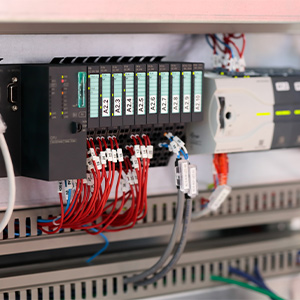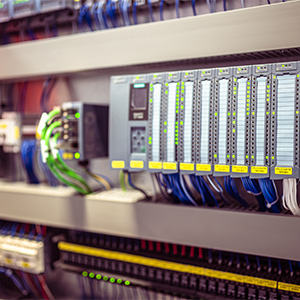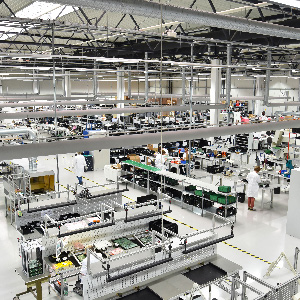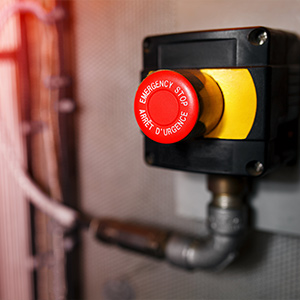As Industry 4.0 has developed, the manufacturing landscape has become more and more comprehensively automated. In today's factory, all the work of setting up, integrating and running industrial machinery is handled by Programmable Logic Controllers (PLC). These small, special-purpose computers handle automated systems of varying complexity, and enable them to communicate quickly and efficiently with each other. They use less power, take up less space and are infinitely faster than old-style relay banks - but what happens if they break down or stop working for other reasons?
PLC Failure and Backup
PLCs today are indispensable, and you'll find them in the control panel on most UK factory floors. What many business owners haven't yet learned, though, is that they need to be backed up, for safety and security reasons. There are many reasons why the data on your PLC might be compromised, including power cuts, operator error, natural disasters and security breaches. You might experience radio frequency or electromagnetic interference, or have problems with the network and communications. Your backup battery could fail, especially if it's more than three years old - and you may not have an emergency power supply.
This is why backing up your PLC is critical. Just as you'd back up all the information on your home PC, you should save a separate copy of the programs and codes installed on your PLC for use in emergencies. This means that you can get your equipment back online much more quickly and avoid the huge costs of unplanned downtime. Furthermore, to be absolutely protected, you should make two PLC backups: one local to your premises and one in a different place entirely, in case your premises are compromised.
PLCs are dedicated computers, designed to run a specific piece of industrial equipment or a whole automated system. They're programmed to serve specialised functions, and the software packages required to run them are likely to be customised to your plant's unique procedures and processes. This makes PLC backups even more important, as that information can't easily be retrieved or rewritten. To be safe, therefore, you must copy all those configurations to at least one, and preferably two sources external to the device. Experienced technicians call this backup system the 3-2-1 strategy.
What's The 3-2-1 Strategy?
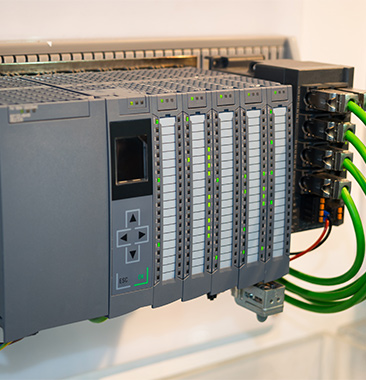
If you're running an automated plant, chances are you'll have your PLC configured for running several machine processes, plus CAD designs and specs, HMI control panels and wireless connectivity. This PLC therefore contains your primary copy (1) of the data you need to run your system, and it's like having a photo you took with your phone stored only on that phone. If you're in the least bit concerned about losing that photo, for whatever reason, chances are you'd copy it to your PC or an external hard drive, and this constitutes your second copy (2) of the data.
Everything stored on your PLC should therefore be subject to this basic procedure, and you should schedule regular PLC backups onto another device that's located in your plant. If the worst happens, though, and you suffer a major power failure, fire or flood, then you're going to need access to your data from off-site. This is where the real security lies, when you have a third copy (3) of your data in safe storage elsewhere. Many people now use the cloud for this purpose, but you might also have an internet support partner or disaster recovery service who'll store your information for you on secure servers. Data Recovery as a Service is now also available on the cloud, which will keep your information continuously updated.
Unplanned Downtime
Machines wear out, and components need replacing all the time, but this can be mitigated by predictive maintenance. PLCs also fail, and your system is not only at risk from accident or breakdown, but from climate change events and malicious damage. Hackers are beginning to recognise how much havoc they can cause by stopping production. There have been several incidents of ransom attacks on major companies like Molson Coors and JBS. Worse still, you might have a disgruntled employee in your midst who deliberately disrupts your system.
The production losses you'll incur as a result can run into hundreds of thousands if you have no disaster recovery plan in place. Molson Coors took their systems offline almost immediately after the ransomware attack, but production was disrupted for upwards of a month, costing the company over $100m. This business was relatively prepared, but a large percentage (some say between 50% and 90%) of businesses go bust within a year of such attacks, mainly because they failed to back up their systems.
Your PLC could even be compromised by your own employees, whether accidental or deliberate. Someone could press the wrong button or delete a vital command. They might even introduce a harmful virus into your system intentionally. Before you know it, your equipment is going into emergency shutdown and you have a lot of work ahead of you to recover and reset the controller. Any data disrupted on the PLC could lead to potential equipment damage or improper functioning, as well as safety issues.
Recovering from such unplanned downtime can take as little as an hour or as long as weeks or months, depending on whether you've made PLC backups. If you haven't, you could find yourself waiting days or even weeks to get a program copy from the original integration company - and that's only if they have one. If you have to recreate your PLC programming from scratch, the costs can run into thousands.
Safeguarding Your Future
PLC backups are all too often on the list of those things that you'll get round to at some point, and it's a shocking fact that, for many people, that's where they stay. However, the impact of data losses from an unsecured PLC can be catastrophic. With data breaches on the rise, and the possibility of a natural disaster being always on the cards, instituting the 3-2-1 strategy today could save you untold stress.

